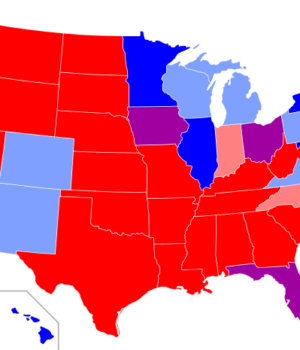Written by Joey Slasher
For around thirty years Texas and Georgia have been securely Republican states when it comes to presidential elections. In Texas, the Republican nominee for president has won every election since 1980. In Georgia the Republican candidate has won every election since 1984 excluding the election of Bill Clinton in 1992. Prior to that though both states had been securely Democratic since before the civil war and began to shift in 1948 culminating into becoming securely Republican states by the 1980s, so what happened then, and what is causing the two states to resurrect their support for the Democrats to return.
As with all of the American South in the years before the civil war, the politics of the people in both Georgia and Texas were deeply connected to the institution of slavery. The Democrats of the time were spread between north and south, and their support for slavery varied across the spectrum, but for the most part the party soft on the institution. Even with the end of slavery in the US the Southern Democrats would institute the Jim Crow laws, and Northern Democrats would allow it in order to maintain party unity.
Overtime the Democratic party’s priorities shifted, and new voting blocs began to enter the coalition. In particular it was Franklin Roosevelt’s New Deal programs that began to draw Black voters away from the Republicans laissez faire policies. This caused a schism in 1948 when the Democratic National Committee made civil rights for black Americans a plank on their platform. This began the slow deterioration of Democratic Support in the south and growth in support in the North as the Republican party made numerous efforts to appeal to disillusioned southern voters.
This leads us to today when Texas and Georgia have securely been in Republican hands for close to four decades. Why is it that they’re now turning back to the Democrats once again?
The answer; a shift in demographics. Texas is on track to have a majority Latinx population by 2022 as well as a rise in millennial populations in the state’s three largest cities. Georgia has seen a massive increase in registered black voters and a general rise in the number of black people in certain key communities. This has moved the white share of the vote from 70 percent to 60 percent.
Latinx, Black Americans, and millennials groups have historically been more sympathetic to Democratic causes and candidates in the past and have been changing Georgia and Texas from securely red to light red, and possibly as soon as this year into a light purple, making them tossups in future presidential elections.
Polling organizations like 538 and Quinnipiac are skeptical of the shift happening this election but the likelihood of a democrat winning in either state continues to rise as time goes on meaning a Democrat could win the presidential election in both or either state in the next five or ten years.




